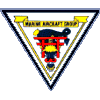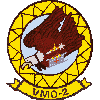| |
|
|
|
Howard Boyd Henry
Major
VMO-2, MAG-16, 1ST MAW, III MAF United States Marine Corps Baltimore, Maryland February 18, 1933 to November 12, 1969 HOWARD B HENRY is on the Wall at Panel W16, Line 64 See the full profile or name rubbing for Howard Henry |
   |

  |
|
Known to all as "Hank Henry" call sign "Hostage PaPa" In a previous tour in 1966 he received recognition for being the first helicopter pilot to chase down and force the surrender of a Viet Cong. He was killed in action 11/12/69 while flying an AH-1G Cobra. His helicopter was hit by VC fire and crash landed. He assisted his weapons officer (Joseph Lofton) out of the helicopter and while they were moving away from the downed craft they were hit by the rotor, killing both instantly.
Placed by his eldest son, |
A Note from The Virtual WallOn 12 November 1969 a patrol from 3rd Platoon, Delta 1/7 Marines encountered a dug-in NVA company on the north-facing slopes of the Que Son Mountains south of An Hoa. The Marines were caught in the open and were pinned in place by mortar and machinegun fire, taking cover in bomb craters and amongst the stubble of dry rice paddies. Air support was called in to help the infantrymen.What happened next is described by one of the Cobra gunship pilots and is taken from the Pop-A-Smoke site:
Six Marines died in the engagement:
|
| Contact Us | © Copyright 1997-2019 www.VirtualWall.org, Ltd ®(TM) | Last update 08/15/2019. |